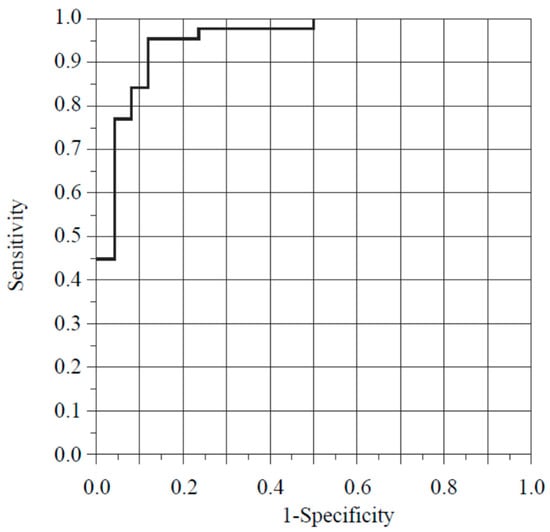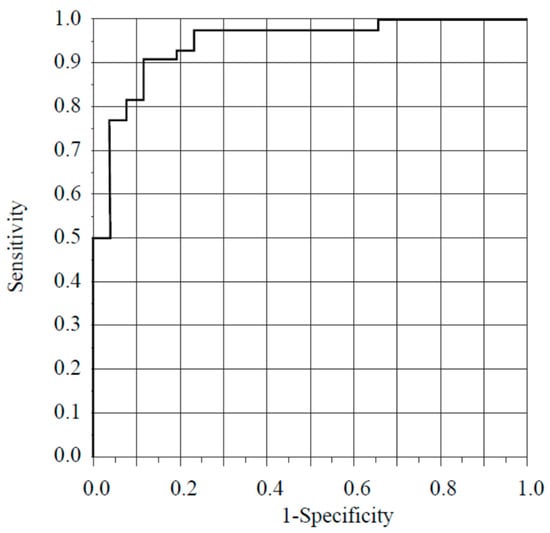I read with great interest the article by Akitaka Yamamoto et al. that was recently published in Diagnostics []. I congratulate the authors for their work, which contributes to the early diagnosis of disseminated intravascular coagulation (DIC) or pre-DIC using soluble C-type lectin-like receptor 2 (sCLEC-2), a novel platelet activation biomarker. An early diagnosis of DIC may enable earlier therapeutic intervention, resulting in an improved prognosis for patients.
My research group also previously reported the clinical utility of sCLEC-2 measurement for the diagnosis of sepsis-induced DIC (SID) []. I would like to offer the following remarks on the report by Yamamoto et al. [] regarding the relationship between sCLEC-2 concentrations and patients with DIC.
Under the circumstance of pre-DIC or DIC, platelets are usually highly activated. However, because thrombocytopenia is frequently observed in DIC, the total plasma sCLEC-2 concentrations released from decreased platelets may not be sufficiently elevated in patients with DIC. Additionally, sCLEC-2 concentrations are likely to be affected by the platelet count. Therefore, this level could remain low under a low platelet count and would not increase immediately. Therefore, my research group proposed calculating the sCLEC-2/platelet count ratio (called the C2PAC index) to determine sCLEC2 concentrations per platelet unit and considered this index an index of platelet activation []. We concluded that the C2PAC index is a useful predictor of the progression and diagnosis of SID in patients with sepsis. Additionally, Ando et al. measured sCLEC-2 concentrations in patients undergoing neurosurgery for high-grade glioma and concluded that the C2PAC index is a potential marker that can detect postoperative venous thromboembolism formation [].
Yamamoto et al. proposed the new “sCLEC-2 × D-dimer/PLT” []. They concluded that the sCLEC-2 × D-dimer/PLT formula is simple, easy, and highly useful for the diagnosis of DIC and pre-DIC without the use of a DIC scoring system. My research group previously performed a stepwise multiple logistic regression analysis to assess the relationship between SID and various molecular markers []. We reported that using the C2PAC index and D-dimer concentrations as predictive markers enabled the diagnosis of SID with a high probability (area under the curve (AUC), 0.95280; sensitivity, 0.9545; specificity, 0.8846) (Figure 1). We decided to calculate sCLEC-2 × D-dimer/PLT in the patient population enrolled in our previous study who were diagnosed with sepsis and were aged 18 years or older []. We used a receiver operating characteristic analysis to examine the diagnostic accuracy of DIC. We found a high AUC (0.9458), and the sensitivity and specificity were both 0.8846 (Figure 2). However, what sCLEC-2 × D-dimer/PLT represents regarding coagulation/fibrinolysis conditions is unclear. Although Yamamoto et al. [] described how sCLEC-2 × D-dimer reflects the activation of platelets and coagulation, they did not explain what sCLEC-2 × D-dimer/PLT represents. I consider explaining what the value of sCLEC-2 × D-dimer divided by the platelet count reflects is important for the readership of Diagnostics.

Figure 1.
Receiver operating curve for predictive SID models in our case []. When the C2PAC index and D-dimer concentrations are selected as predictive markers for the diagnosis of SID, SID can be diagnosed with a high probability (AUC, 0.95280; sensitivity, 0.9545; specificity, 0.8846). C2PAC index means the ratio of sCLEC-2/platelet count. SID, sepsis-induced coagulopathy; sCLEC-2, soluble C-type lectin-like receptor 2; AUC, area under the curve.

Figure 2.
Receiver operating curve for predictive SID models in Yamamoto’s case []. When sCLEC-2 × D-dimer/PLT is selected as a predictive marker for the diagnosis of SID, SID can be diagnosed with a high probability (AUC, 0.9548; sensitivity and specificity, 0.8846). SID, sepsis-induced coagulopathy; sCLEC-2, soluble C-type lectin-like receptor 2; PLT, platelet count.
Additionally, Yamamoto et al.’s study population included patients with post-cardiopulmonary arrest (n = 25) []. In all underlying diseases, except for patients with unidentified clinical syndromes, patients with post-cardiopulmonary arrest showed different platelet counts, values of coagulation/fibrinolytic markers, and DIC scores compared with those with other underlying diseases (Table 1) []. I feel this discrepancy might introduce research bias. Additionally, patients diagnosed with DIC should be analyzed based on underlying disease, such as solid cancer, hematological malignancy, aortic aneurysm, trauma, or infection. This perspective underscores the importance of meticulous consideration in research endeavors. I offer commentary on this study [], which I believe could be of value to researchers grappling with the formulation of formulas within clinical studies.

Table 1.
Demographics and clinical characteristics, coagulation/fibrinolysis markers, DIC score and sCLEC2 in patients with each disease [].
Data Availability Statement
Data are available at https://doi.org/10.1080/09537104.2021.2019694, accessed on 10 September 2023.
Acknowledgments
We thank Ellen Knapp for editing a draft of this manuscript.
Conflicts of Interest
The author declares no conflict of interest.
References
- Yamamoto, A.; Wada, H.; Tomida, M.; Ichikawa, Y.; Ezaki, M.; Shiraki, K.; Shimaoka, M.; Iba, T.; Suzuki-Inoue, K.; Kawamura, M.; et al. Super Formula for Diagnosing Disseminated Intravascular Coagulation Using Soluble C-Type Lectin-like Receptor 2. Diagnostics 2023, 13, 2299. [Google Scholar] [CrossRef] [PubMed]
- Ishikura, H.; Irie, Y.; Kawamura, M.; Hoshino, K.; Nakamura, Y.; Mizunuma, M.; Maruyama, J.; Nakashio, M.; Suzuki-Inoue, K.; Kitamura, T. Early recognition of sepsis-induced coagulopathy using the C2PAC index: A ratio of soluble type C lectin-like receptor 2 (sCLEC-2) level and platelet count. Platelets 2022, 33, 935–944. [Google Scholar] [CrossRef] [PubMed]
- Ando, K.; Natsumeda, M.; Kawamura, M.; Shirakawa, K.; Okada, M.; Tsukamoto, Y.; Eda, T.; Watanabe, J.; Saito, S.; Takahashi, H.; et al. Elevated ratio of C-type lectin-like receptor 2 level and platelet count (C2PAC) aids in the diagnosis of post-operative venous thromboembolism in IDH-wildtype gliomas. Thromb. Res. 2023, 223, 36–43. [Google Scholar] [CrossRef] [PubMed]
Disclaimer/Publisher’s Note: The statements, opinions and data contained in all publications are solely those of the individual author(s) and contributor(s) and not of MDPI and/or the editor(s). MDPI and/or the editor(s) disclaim responsibility for any injury to people or property resulting from any ideas, methods, instructions or products referred to in the content. |
© 2023 by the author. Licensee MDPI, Basel, Switzerland. This article is an open access article distributed under the terms and conditions of the Creative Commons Attribution (CC BY) license (https://creativecommons.org/licenses/by/4.0/).